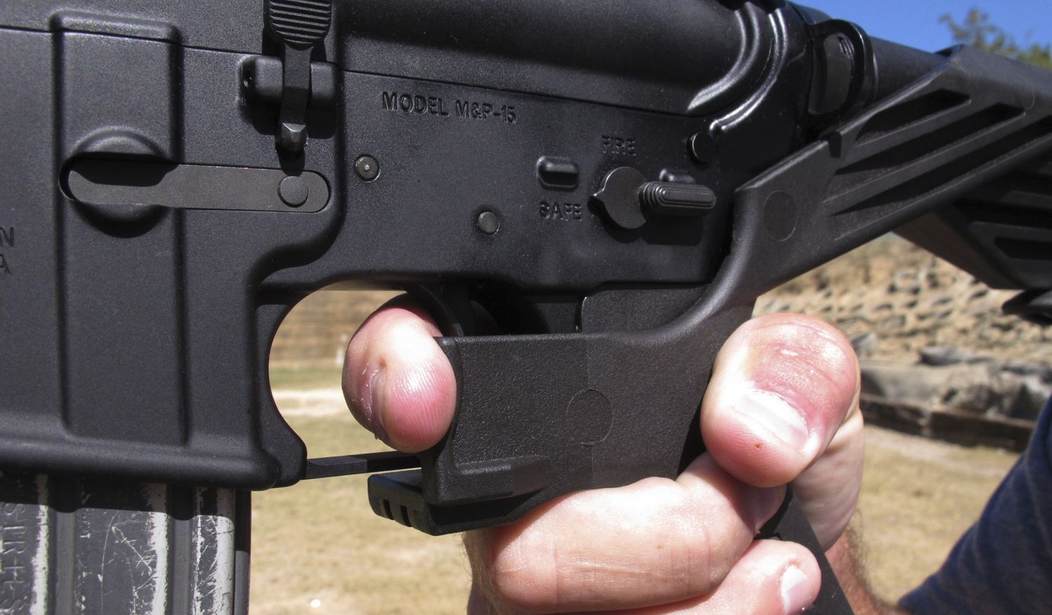The U.S. Supreme Court is getting a chance to weigh in on the ATF’s ban on bump stocks imposed after the Las Vegas shooting in 2018, with the Firearms Policy Coalition filing a Petition for a Writ of Certiorari with SCOTUS on Thursday.
The case, known as Guedes v. BATFE, was last heard by the D.C. Circuit Court of Appeals, which upheld the ATF rule last year. In its opinion, the appellate court ruled that it was within the ATF’s purview to define bump stocks as machine guns, despite the fact that the devices have no moving parts nor allow for multiple rounds to be fired with a single pull of the trigger.
Other appellate courts, including the Fifth Circuit Court of Appeals, have disagreed; ruling that the administratively-imposed ban went beyond the agency’s authority.
A plain reading of the statutory language, paired with close consideration of the mechanics of a semi-automatic firearm, reveals that a bump stock is excluded from the technical definition of “machinegun” set forth in the Gun Control Act and National Firearms Act.
But even if that conclusion were incorrect, the rule of lenity would still require us to interpret the statute against imposing criminal liability. A rich legal tradition supports the “well known rule” that “penal laws are to be construed strictly.” United States v. Wiltberger, 18 U.S. (5 Wheat.) 76, 94–95 (1820). As Chief Justice Marshall explained long ago, the rule “is founded on the tenderness of the law for the rights of individuals; and on the plain principle that the power of punishment is vested in the legislative, not in the judicial department. It is the legislature, not the Court, which is to define a crime, and ordain its punishment.” Id. at 95.
The Government’s regulation violates these principles. As an initial matter, it purports to allow ATF—rather than Congress—to set forth the scope of criminal prohibitions. Indeed, the Government would outlaw bump stocks by administrative fiat even though the very same agency routinely interpreted the ban on machineguns as not applying to the type of bump stocks at issue here. Nor can we say that the statutory definition unambiguously supports the Government’s interpretation. As noted above, we conclude that it unambiguously does not. But even if we are wrong, the statute is at least ambiguous in this regard. And if the statute is ambiguous, Congress must cure that ambiguity, not the federal courts.
The definition of “machinegun” as set forth in the National Firearms Act and Gun Control Act does not apply to bump stocks. And if there were any doubt as to this conclusion, we conclude that the statutory definition is ambiguous, at the very least. The rule of lenity therefore compels us to construe the statute in Cargill’s favor. Either way, we must REVERSE.
The Tenth Circuit has sided with the D.C. Circuit Court of Appeals decision, while the Sixth Circuit found that the rule is unenforceable and setting up a genuine split among the appellate courts. That increases the odds of the Supreme Court accepting Guedes for review, and the division between the lower courts was noted in FPC’s request for the Court to step in.
The topline split is as follows: the D.C. Circuit and Tenth Circuit have upheld the Rule prohibiting bump stocks, while the Fifth Circuit and the Sixth Circuit have found it unlawful. But to merely state the divide in circuits is to understate how fragmented these decisions are. The courts below are divided not only on whether the Rule prohibiting non-mechanical bump stocks is lawful but also on whether § 5845(b) is ambiguous. And even those courts that agree that provision is ambiguous are split on what to do about the ambiguity they find.
… By granting this Petition, the Court will resolve several important questions, applicable beyond the narrow confines of the Rule. Yet, it will also be able to correct ATF’s unlawful overreach, which made the possession of non-mechanical bump stocks by ordinary, law-abiding citizens a criminal offense, all “without Congress lifting a finger.” Pet.App.94 (Walker, J., dissenting).
… “[T]he bump stock ban is not ordinary. It’s the source of a circuit split. It’s the product of an agency’s impatience with Congress. And it’s an affront to 800 years of Anglo-American legal history restricting the executive’s power to create new crimes.” Pet.App.88. It is an issue that requires this Court’s review.
It’s one of many issues relating to our right to keep and bear arms that requires the Court’s attention, to be honest. Given the circuit split and the ripeness of the question at the heart of Guedes, I think there’s a strong chance that SCOTUS will grant the FPC’s cert petition, and if they do their decision on the constitutionality of the ATF’s bump stock ban could go a long way towards determining the future of the agency’s rules on unfinished frames and receivers as well as its more recent prohibition on pistol stabilizing braces.









Join the conversation as a VIP Member